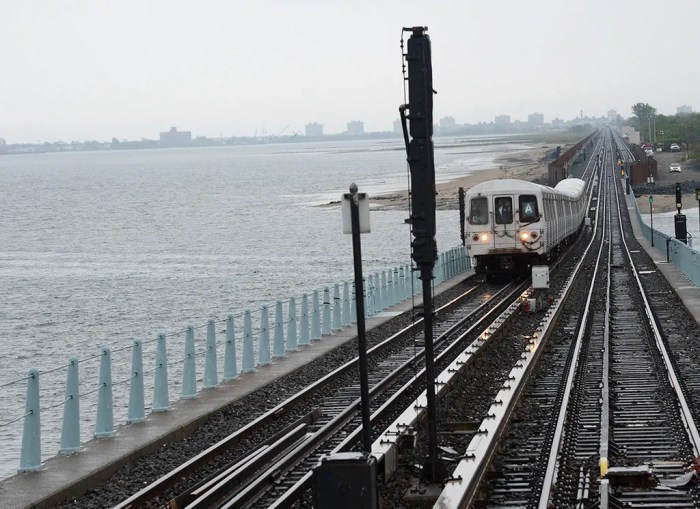By Gary Buiso
While the governor this week said Brooklyn’s waterfront is a “vital economic engine,” the agency he partially controls might soon let the air out of the tires. The Port Authority of New York and New Jersey is holding firm on a promise to boot Red Hook’s container terminal once the company’s lease expires. “There has been no change in our position,” said Steve Coleman, a spokesperson for the Port Authority. “There is no desire to renew,” he said, referring to the lease held by American Stevedoring, operator of the container terminal on Piers 7-10. The city’s Economic Develop-ment Corporation (EDC) is leading a plan that seeks to transform and democratize Piers 7-12, opening the area to a wide array of tourist-friendly uses. To do so, American Stevedoring, whose lease expires on March 31 of this year, could be downsized or evicted from the neighborhood. Coleman said that at the end of 2005, the Port Authority signed a memorandum of understanding with the city to begin a process that will formally transfer the piers. “That is underway,” he said. Sources close to ongoing discussions about the matter dismissed the Port Authority’s read on the situation. “Either he picked up the wrong cue card, or policy decisions are not being properly run up the food chain,” the source said. Because of the sensitive nature of the talks, the source requested anonymity. The source said it is likely—following a City Hall hearing in which the plan was widely criticized, as well as the arrival of a new administration in Albany—that the plan will be significantly changed in the near future. Already, an idea for residential housing on the western side of Columbia Street has been excised from the plan after it drew ire from local residents. The city, meanwhile, has said all along that the plan is an elastic document that will undoubtedly change as public discussions continue. “The Port Authority doesn’t realize that the world has changed,” the source added. Another source noted that no final decisions about the future of the piers or the container port have been reached. Asked to comment about the issue, which has grown contentious since its introduction at the close of 2005, Governor Eliot Spitzer’s office said, “The Brooklyn waterfront is now a vital economic engine and in order to ensure that it remains so, all factors must be carefully considered.” Spitzer holds control over half the Port Authority’s board and its executive director. Coleman said that the Port Authority’s biggest concern is finding a use for the piers that will “attract economic activity and jobs well into the future.” When the agency put out feelers back in 2003 to see what kind of interest there was from the maritime industry in Red Hooks piers, it got its answer, Coleman said. “Two of the responders wanted to store automobiles there, and the third was American Stevedoring,” he said. “We took that as a lack of interest in using it [for] the maritime industry,” Coleman added. As part of the new plan, the city hopes to regain control of the piers, following an exhaustive review process. He said a 2003 study that the EDC and the Port Authority co-commissioned found a mixed-use environment—including recreational uses, light manufacturing businesses, and residential development—would constitute a better use than the status quo. Instead of winning widespread support for its unbridled ambition, the plan has instead soured many of the area’s local elected officials, including Rep. Jerrold Nadler, who described it as “myopic.” Nadler, a booster of container terminal, insists that its continued existence trumps a decidedly less-gritty vision of the waterfront. Kate Ascher, EDC’s executive vice president for infrastructure last week told this newspaper that the strategy is to pursue “an array of maritime uses for the piers that will thrive and work well with the surrounding communities.” “Our vision for the Port of Brooklyn is to create a place where maritime cargo and passengers mix seamlessly with maritime support industries and civic and community uses.” Ascher said the most important element of the plan is job creation.


































